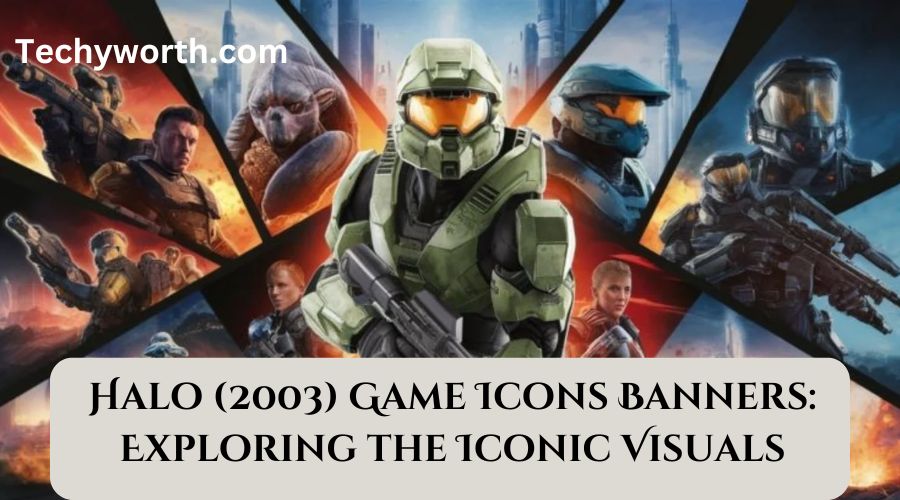Halo (2003) Game Icons Banners have become iconic elements in the gaming world. They not only define the game’s aesthetic but also enhance the player’s experience by providing crucial information and setting the tone for gameplay. This article explores the significance of these visual elements, their evolution, and their impact on the gaming community.
Introduction
The release of Halo: Combat Evolved in 2003 brought a revolution in game design, particularly through its use of distinctive icons and banners. These visual elements are integral to the game, offering players intuitive navigation and enhancing the immersive experience. The Halo (2003) game icons banners are not just functional; they also contribute to the game’s rich lore and atmosphere.
Key Icons in Halo (2003)
Icons play a crucial role in Halo (2003), representing various elements from characters to weapons. The most recognizable is the “Master Chief icon“, symbolizing strength and resilience. Another key icon is Cortana, whose blue holographic design adds a futuristic feel. The Halo ring icon represents the game’s central theme, while icons for weapons like the Energy Sword and vehicles like the Warthog provide quick visual cues for players.
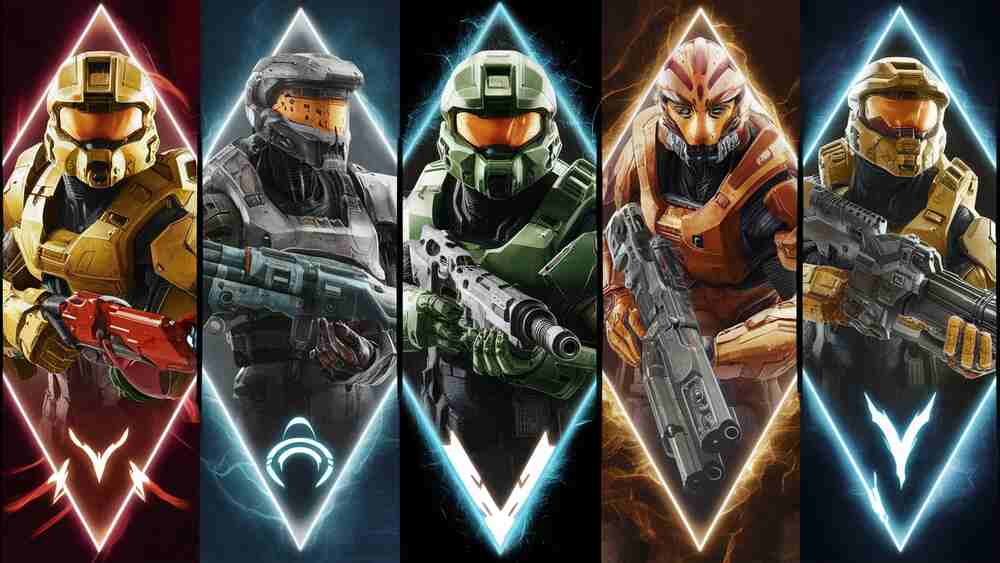
Master Chief and Cortana Icons
The Master Chief icon, often shown with the iconic green Mjolnir armor, symbolizes the player’s role in the game. Cortana’s icon, with her distinct blue glow, represents her AI presence and plays a significant role in the narrative.
Halo Ring and Environment Icons
The Halo ring icon captures the vastness of the game’s setting. Environmental icons depict various locations and scenarios, enhancing the game’s immersive quality.
Weapon and Vehicle Icons
Weapons like the MA5B Assault Rifle and vehicles like the Banshee have distinct icons that help players quickly identify and utilize them in the game.
Multiplayer Mode Icons
In multiplayer, icons such as those for Capture the Flag and Slayer modes help players understand game objectives and team dynamics.
The Role of Banners in Halo (2003)
Banners in Halo (2003) serve multiple purposes, from setting the scene to marking achievements. These banners often feature stunning visuals and thematic elements that enrich the gameplay experience.
Campaign Mission Banners
Each campaign mission is introduced with a banner that sets the mood. These banners often showcase key locations or significant events, preparing players for the challenges ahead.
Multiplayer Team Banners
In multiplayer modes, team banners are essential for identifying allies and opponents. The distinct color schemes and designs, such as red for one team and blue for another, help maintain clarity during intense matches.
Achievement Banners
Achievement banners appear when players complete specific tasks or reach milestones. These banners provide a sense of accomplishment and encourage further engagement with the game.
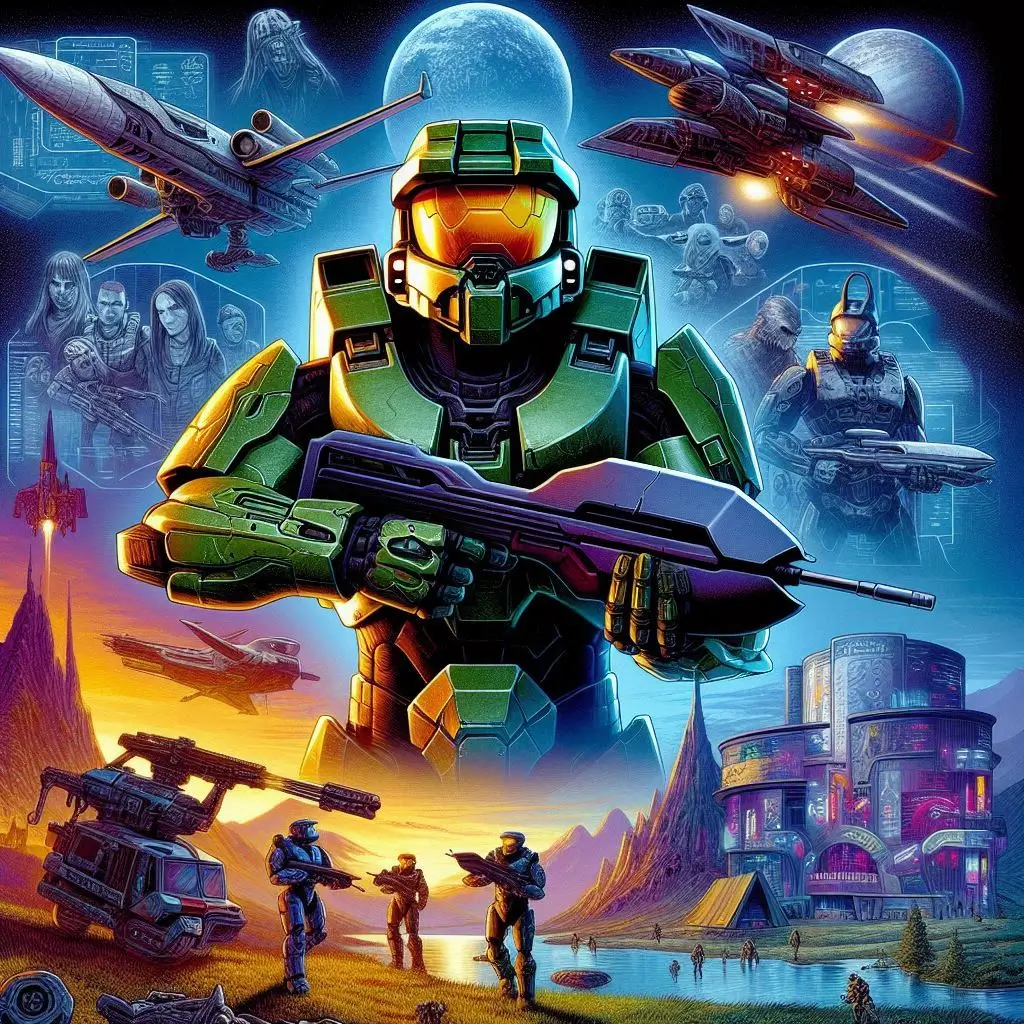
Design Philosophy Behind Halo Icons and Banners
The design of Halo (2003) icons and banners is guided by principles of clarity, coherence, and thematic consistency. The use of color and style helps convey essential information quickly and effectively.
Color Scheme and Symbolism
Colors are used strategically to convey different meanings. For example, blue often represents allies, while red indicates enemies. This consistent use of color helps players quickly understand their surroundings.
Artistic Style and Clarity
The game’s artistic style is futuristic, with clean lines and simple shapes. This design choice not only looks appealing but also ensures that icons and banners are easily recognizable.
Influence of Sci-Fi Aesthetics
The sci-fi setting of Halo (2003) heavily influences its visual design. The use of advanced technology, alien symbols, and futuristic landscapes adds depth to the game’s narrative and world-building.
Evolution of Halo Icons and Banners
Over the years, the icons and banners of Halo have evolved, adapting to new technologies and gaming platforms. This evolution reflects the game’s growth and the increasing sophistication of its visual elements.
Transition Across Platforms
From the original Xbox to modern PCs, the resolution and detail of icons and banners have improved significantly. This transition has allowed for more complex and visually stunning designs.
Technological Advancements and Visual Enhancements
Advancements in graphics technology have enabled more detailed textures and lighting effects. These improvements have enhanced the visual appeal of Halo’s icons and banners.
Changes in Iconography Over Time
As the series has progressed, the iconography has also evolved. New icons have been introduced, and existing ones have been refined to better fit the game’s evolving aesthetic.
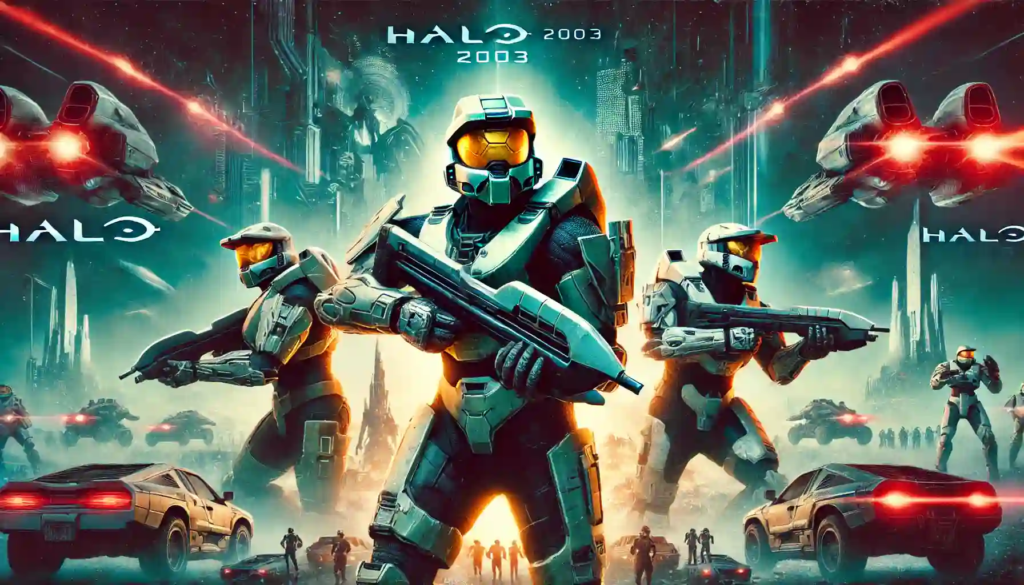
Impact of Icons and Banners on Gameplay
Icons and banners in Halo (2003) do more than add visual appeal; they play a crucial role in gameplay. They provide important information, help with navigation, and contribute to the overall atmosphere of the game.
Enhanced Immersion and Storytelling
The use of icons and banners enhances immersion by providing visual cues that support the game’s narrative. They help players feel more connected to the story and the game world.
Utility in Gameplay Mechanics
Icons for health, ammo, and other gameplay elements ensure that players have all the information they need at a glance. This utility is crucial for maintaining the fast-paced nature of the game.
Cultural Significance and Recognition
Halo’s icons and banners have become culturally significant, recognized by fans and gamers worldwide. They have appeared in various media and merchandise, further cementing their iconic status.
Read To Know About: FTSE 100 Fintechzoom
Fan-Made Icons and Banners
The Halo community has embraced the game’s visual elements, creating custom icons and banners that showcase their creativity. These fan-made contributions enrich the game and allow players to express their identities.
Community Contributions
Fans have created a wide range of custom icons and banners, from personalized player emblems to reimagined character designs. These creations reflect the deep love and appreciation the community has for the game.
Customization and Player Identity
Customization options allow players to create unique emblems and banners, fostering a sense of identity and community within the game.
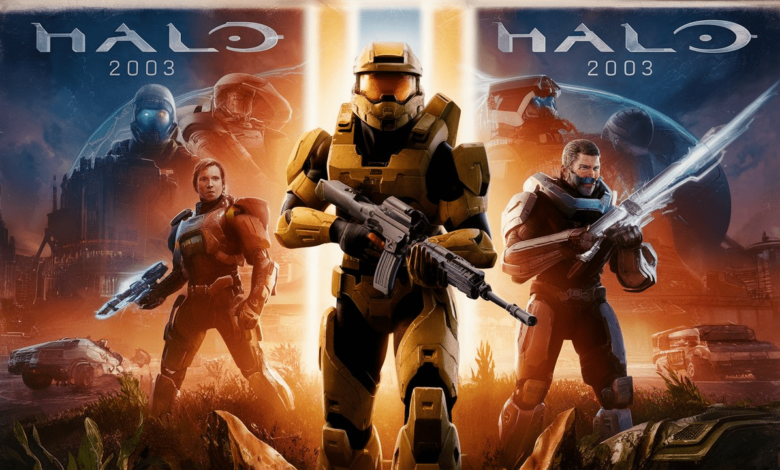
The Legacy of Halo (2003) Game Icons Banners
The design and impact of Halo (2003) game icons banners have left a lasting legacy in the gaming world. They have influenced other games and become a hallmark of excellent visual design.
Influence on Subsequent Games
Many games have drawn inspiration from Halo’s approach to icons and banners. The emphasis on clarity and thematic consistency has set a standard in the industry.
Presence in Popular Culture
Halo’s visual elements have permeated popular culture, appearing in everything from fan art to mainstream media. This widespread recognition speaks to the game’s lasting impact.
Conclusion
The Halo (2003) game icons banners are more than just visual elements; they are a core part of the game’s identity. From enhancing gameplay to fostering community, these icons and banners have played a pivotal role in the game’s success. As the Halo series continues to evolve, the legacy of these iconic visuals will undoubtedly endure.
Frequently Asked Questions (FAQs)
What are the main icons in Halo (2003)?
- The main icons include the Master Chief, Cortana, Halo ring, weapons, vehicles, and various multiplayer mode symbols.
How do the game icons enhance gameplay in Halo (2003)?
- Icons provide quick visual cues, aiding in navigation, identifying weapons, and distinguishing between allies and enemies.
What is the significance of the Halo ring icon?
- The Halo ring icon represents the game’s primary setting, symbolizing the mysterious and expansive universe of Halo.
What role do banners play in Halo (2003)?
- Banners set the scene for missions, highlight achievements, and provide visual coherence in multiplayer modes.
How has the design of icons and banners evolved in Halo games?
- The design has evolved with advancements in graphics, becoming more detailed and visually appealing over time.
What are the colors used in Halo (2003) icons and what do they signify?
- Blue typically represents allies, red indicates enemies, and other colors are used for various indicators and elements.
How do multiplayer mode icons assist players in Halo (2003)?
- They help players understand objectives and team dynamics, crucial for gameplay strategy.
What are some of the most iconic weapon icons in Halo (2003)?
- Iconic weapon icons include the Energy Sword, MA5B Assault Rifle, and Sniper Rifle, each representing unique combat abilities.
Why are fan-made icons and banners significant in the Halo community?
- They showcase fan creativity and allow players to personalize their in-game experience, fostering a sense of community.
How do achievement banners impact the player experience in Halo (2003)?
- Achievement banners provide a sense of accomplishment and encourage players to engage more deeply with the game.
